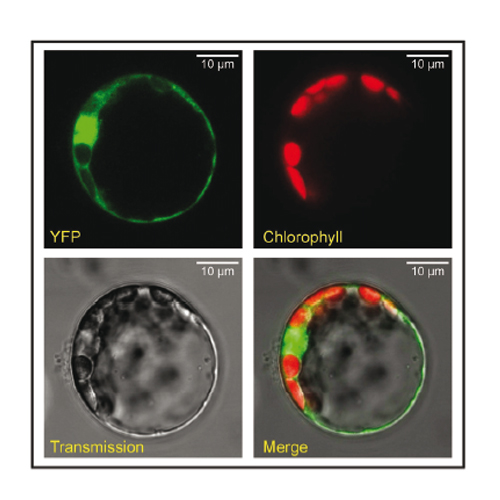Technical note: Brassica rapa: a new model plant for the isolation of chloro-plasts and biochemical studies
01-May-2011
Endocytobiosis and Cell Research, 2011, 21, 52 - 58 published on 01.05.2011
Journal of Endocytobiosis and Cell Research, online article
Journal of Endocytobiosis and Cell Research, online article
A major problem for chloroplast research remains that plant species which are utilized in order to obtain a high amount of isolated intact chloroplasts are not sequenced on a genomic base. Thus it is difficult to combine the data from biochemical experiments with genomic data and employ techniques such as MS to identify low abundant proteins. There are plant species like Arabidopsis thaliana with a completely available genome but the yield of chloroplasts compared to plants like Pisum sativum is comparatively low. Brassica rapa subsp. pekinensis, commonly known as chinese or napa cabbage, is a fast growing plant with a high yield of biomass. In addition, it has a small genome which will soon be completed and available for the plant science community (http://www.brassicarapa.org). The availability of a complete genome sequence and its close kinship to Arabidopsis thaliana makes this plant an interesting new model organism. In this paper we show that a high yield of pure intact chloroplasts can be obtained from 4 weeks old leave material making the plant suitable for biochemical studies. In addition we demonstrate that protoplasts can be obtained and used for PEG mediated transient expression of GFPtagged proteins allowing for experiments such as the investigation of protein localisation.











